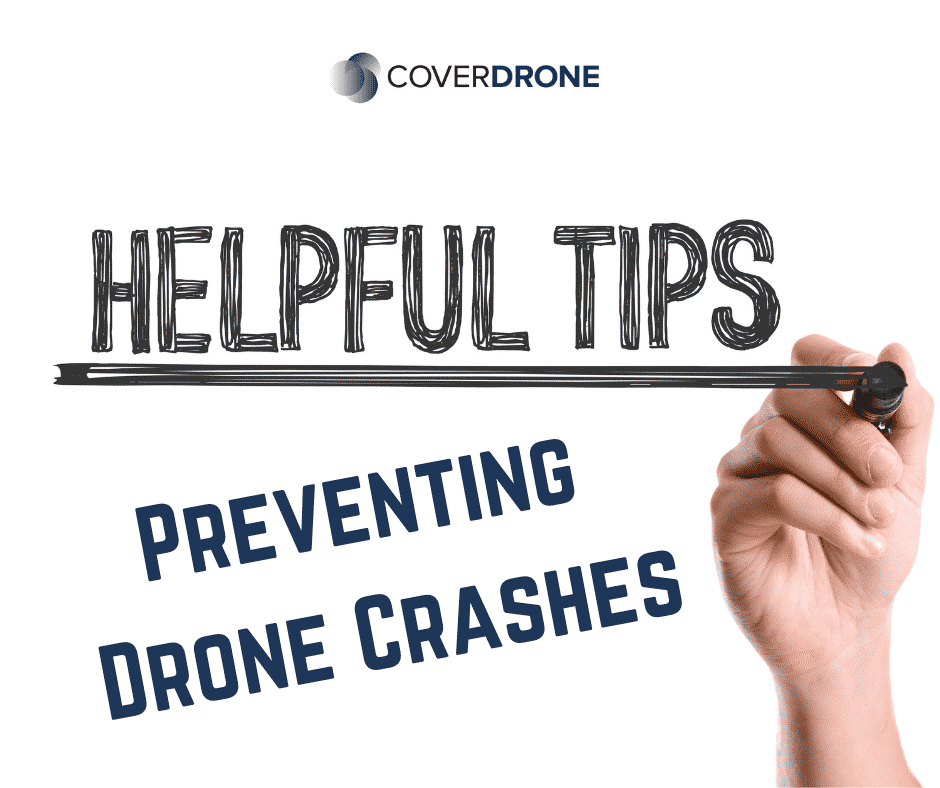
No drone pilot wants to experience a dreaded drone crash. You may have already been unfortunate to experience one or, fortunate to have not.
Either way, it is always best practice to be knowledgeable of inevitable factors that are out of your hands which could cause your drone to crash for present and future reference! Here we list 5 factors to be aware of and how to avoid them:
Poor maintenance (Including malfunctioning rotors)
It should go without saying that pre-flight you should inspect your drone with checks to make sure that your drone is as safe as it possibly can be before it takes flight.
Although drone rotors may appear to be tough and sturdy, they are also designed to be soft in a way that they won’t cause harm upon people or damage to objects. We would advise for you to always check each individual rotor before your flight to ensure they are safe and not damaged, if your drone has experienced any bumps from previous flights!
Compass error
Did you know… Incorrectly tuned compasses are one of the biggest causes of drone crashes. Drone compasses can become detuned from any magnetic and radio frequency source. To avoid this, keep your drone away from anything magnetic and environments with high electromagnetic interference (high voltage power lines and mobile towers, for example).
Braking distance and hitting return too soon…
It may, or may not have, crossed your mind that when you stop your drone you need to make sure you set enough time for it to safely conclude its journey so that the drones travel flight speed reduces. The faster your drone is flying = the longer it will take for the drone to stop its flight.
There are other elements that can significantly affect the braking distance such as the windspeed and direction. Ensure when flying over heavily populated areas and near obstacles such as trees your speed is decreased to maintain control of your drone’s navigation. When you feel like you may be losing control of your drone refrain away from pressing the Return to Home (RTH) button. We understand that naturally, it would be your instant response to this situation to hit RTH, but a high majority drones are not designed to avoid obstacles automatically. The drone traces a straight line towards the designated home point unaware of anything that may be in the way (think trees and buildings for example) which worst case scenario, may result in a collision!
Incorrect home point
This sometimes happens when the GPS lock is lost during flight and then regained causing the drone to recalibrate an incorrect home point. It is worth noting that the home point is where your drone took off from or wherever your remote controller is so the best practice is to perform your checks!
Also, by setting your return to home altitude higher than anything else within the area, 100 meters should be fine unless you are flying in a high-built area or near tall structures such as telephone masts.
Battery
It is best practice to always fly your drone with a fully charged battery, it really is not worth the risk of beginning the flight of your drone on insufficient charge. We understand that it is tempting to fly your drone on a semi-charged battery (50% for example) but try to avoid getting into this habit. You may be thinking ‘why, what is the issue? 50% is a lot of battery!’. It’s simply because you could randomly loose power mid flight when you least expect it!
If there are any emergencies where you need your drone to ‘return home’ it is best to ensure that you have at least 30% battery reserved in case there is a delay in landing. For example, this reserved battery can be used towards relocate your landing spot or dealing with the urgent problem itself. Some drones to have failsafe features, such as automatically using the RTH function when the drone hits 10% battery. However, this doesn’t mean that a drone crash wouldn’t be possible (as mentioned above, some drones do not have omnidirectional sensing and travel back in a straight line!).
FlySafe with Coverdrone
Did you know we have an exclusive app to our Coverdrone clients? FlySafe is a completely free app is designed to help our customers plan and conduct their drone flights quicker and safer. It is compatible with both Apple and Android Devices. Coverdrone offer both commercial and recreational drone insurance policies, be sure to fly safe with the correct drone insurance policy for you – we’ve got you covered!
If you do unfortunately experience a drone crash as a Coverdrone client, please fill in our online Coverdrone claim form and a member of the claims team will be in touch with you as soon as possible. Additionally, if you would like to find our more about our claims department check out our previous blog post.
